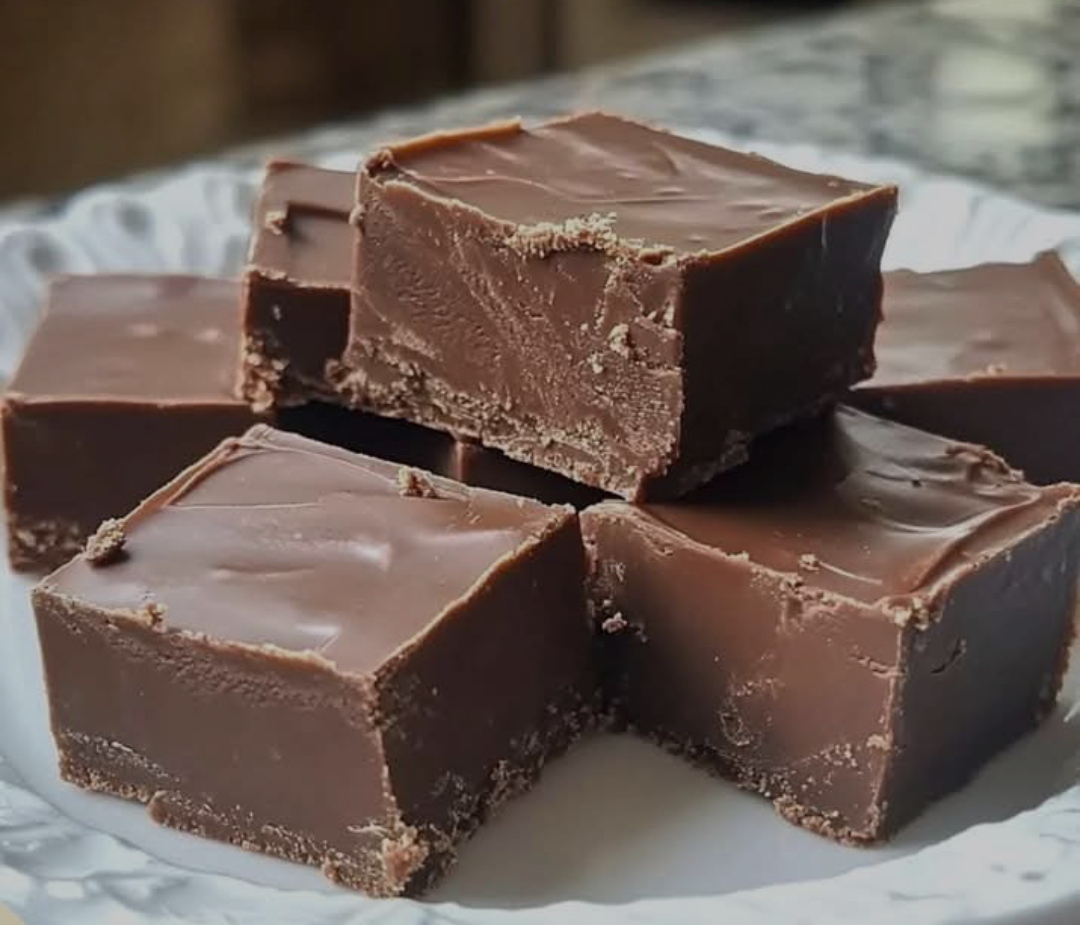Old-Fashioned Fudge: A Timeless Treat
Fudge is a classic confectionery that has been enjoyed for generations. Its rich, creamy texture and deep chocolate flavor make it a favorite at holidays, special occasions, and family gatherings. Old-fashioned fudge is known for its smooth consistency, achieved through precise cooking and cooling methods. Unlike modern quick-fix fudge recipes that use condensed milk or marshmallow cream, traditional fudge relies on sugar crystallization, requiring patience and skill to perfect.
This recipe will guide you through making authentic old-fashioned fudge while also exploring its history, benefits, variations, and why people love it so much.
History of Old-Fashioned Fudge
The origins of fudge trace back to the late 19th century. Some sources claim it was first made by accident in the U.S. when a batch of caramel was “fudged,” meaning it didn’t turn out as expected. The first known fudge recipe appeared in the early 1900s, and it quickly gained popularity in college towns and candy shops. Mackinac Island in Michigan became famous for its handmade fudge, which is still a tourist attraction today.
Benefits of Old-Fashioned Fudge
While fudge is undoubtedly a sweet indulgence, it does have some benefits when enjoyed in moderation:
- Mood Booster: The chocolate in fudge contains serotonin, which can enhance mood and reduce stress.
- Energy Boost: Sugar provides quick energy, making fudge a great treat during busy days.
- Antioxidants: Dark chocolate-based fudge offers antioxidants that support heart health.
- Tradition & Nostalgia: Making and sharing old-fashioned fudge is a time-honored tradition that brings families together.
Ingredients for Old-Fashioned Fudge
Makes about 2 pounds of fudge
- 3 cups granulated sugar
- ¾ cup unsweetened cocoa powder
- 1 ½ cups whole milk
- ¼ teaspoon salt
- 3 tablespoons unsalted butter
- 1 teaspoon pure vanilla extract
Instructions & Cooking Method
- Prepare the Pan: Line an 8-inch square baking dish with parchment paper or lightly butter it.
- Combine Dry Ingredients: In a heavy-bottomed saucepan, whisk together sugar, cocoa powder, and salt.
- Add Milk & Heat: Stir in the milk and place the pan over medium heat. Stir constantly until the sugar dissolves.
- Boil Without Stirring: Once the mixture reaches a rolling boil, stop stirring. Clip a candy thermometer to the side of the pan and let it cook until it reaches 234°F (soft-ball stage).
- Remove from Heat: Take the pan off the heat and add the butter and vanilla extract without stirring.
- Cool & Beat the Fudge: Let the mixture cool undisturbed until it reaches about 110°F. Then, beat the fudge vigorously with a wooden spoon until it thickens and loses its shine.
- Pour & Set: Quickly pour the fudge into the prepared pan, spreading it evenly. Let it set at room temperature for a few hours.
- Cut & Serve: Once firm, cut into squares and enjoy!
Fudge Formation & Texture Tips
- Avoid Grainy Fudge: The key to smooth fudge is allowing the sugar to dissolve fully before boiling and avoiding stirring once it begins boiling.
- Beating Matters: Beating the fudge once it cools down creates the tiny sugar crystals that give it a smooth but firm texture.
- Soft vs. Firm Fudge: If you prefer a softer fudge, you can slightly undercook it. If you like it firmer, cook it slightly past the soft-ball stage.
Fudge Lovers & Why They Adore It
Fudge has a special place in the hearts of many:
- Chocolate Enthusiasts: Lovers of rich, intense chocolate flavors find old-fashioned fudge irresistible.
- Holiday Bakers: Many families make fudge as part of holiday traditions, especially at Christmas.
- Candy Connoisseurs: Those who appreciate handmade confections admire the skill required to make perfect old-fashioned fudge.
- Tourists & Travelers: Destinations like Mackinac Island and seaside candy shops have made fresh fudge a must-try experience.
Nutritional Information (Per 1-Inch Square Piece)
Note: These values vary depending on ingredient choices.
Conclusion: A Sweet Legacy
Old-fashioned fudge is more than just a dessert; it’s a tradition, a science, and an art. Whether you make it for a special occasion or just to satisfy a chocolate craving, the process is rewarding. By following this classic method, you can create rich, creamy, and decadent fudge just like the old-fashioned candy makers of the past.
Now that you know the secrets to perfect fudge, gather your ingredients and start cooking—your taste buds will thank you!
